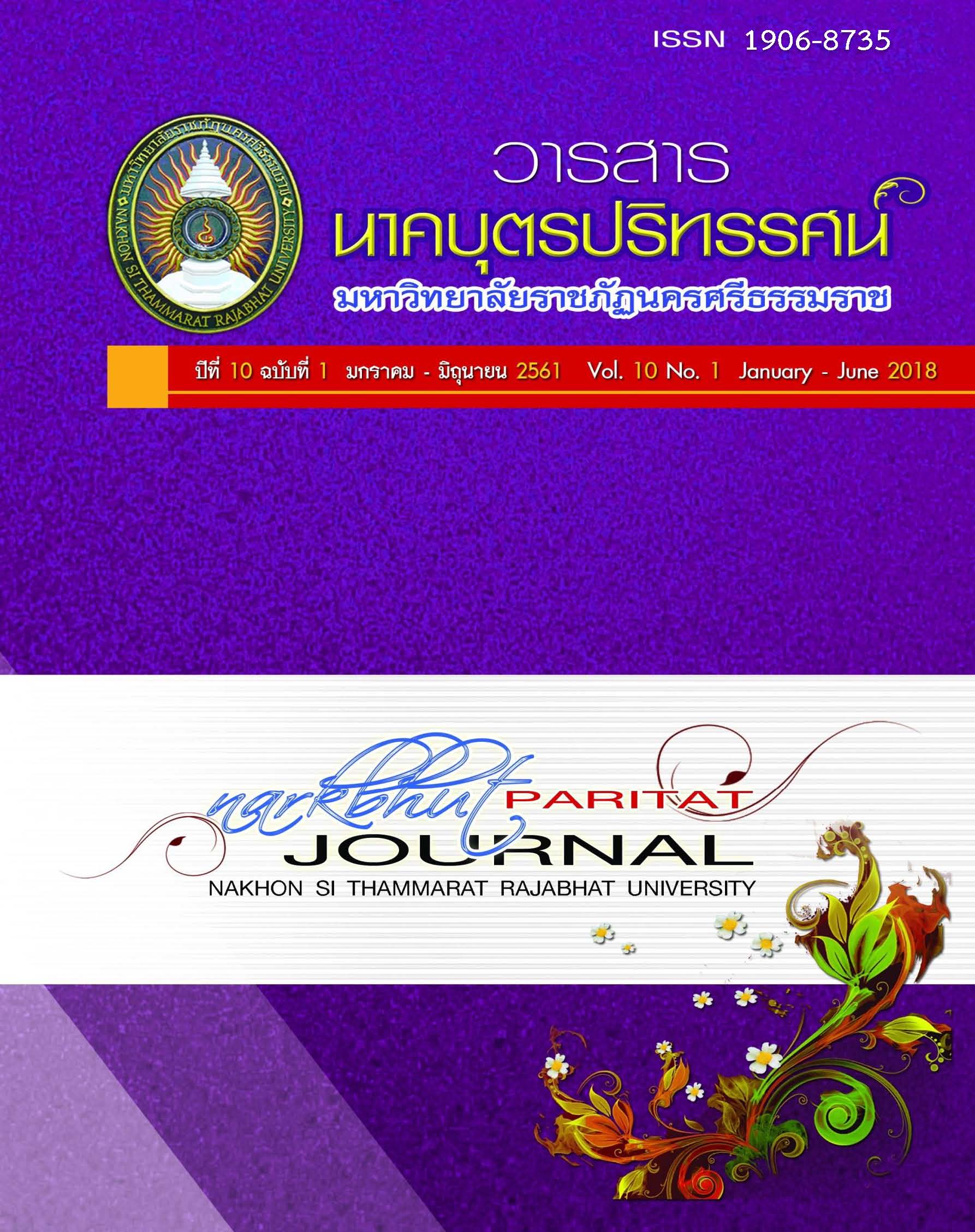เขตปรับเปลี่ยนระหว่างภาษาไทยถิ่นกลางและภาษาไทยถิ่นใต้ โดยการแปรของศัพท์ตามกลุ่มอายุ
Main Article Content
Abstract
บทคัดย่อ
นับตั้งแต่มีการศึกษาเรื่องหาเส้นแบ่งเขตภาษาซึ่งภายหลังมีการปรับเปลี่ยนเป็นการหาเขตปรับเปลี่ยนภาษาระหว่างภาษาไทยถิ่นกลางกับภาษาไทยถิ่นใต้ ในปี พ.ศ.2526 จนถึงปัจจุบัน มีการศึกษาจำนวนมากที่กำหนดเส้นแบ่งเขตภาษาระหว่างภาษาไทยถิ่นกลางกับภาษาไทยถิ่นใต้ ซึ่งพบว่าเส้นแบ่งเขตต่ำลงจากจุดเดิมเสมอ และภายหลังเมื่อมีการนำเอาปัจจัยทางสังคม ได้แก่ เพศ อายุ ทัศนคติ การศึกษา เข้ามาร่วมพิจารณา ทำให้เห็นว่าปัจจัยด้านอายุและทัศนคติเป็นปัจจัยที่มีความสัมพันธ์ต่อการเลือกใช้ภาษาอย่างมีนัยสำคัญ จากการศึกษาเขตปรับเปลี่ยนระหว่างภาษาไทยถิ่นกลางและภาษาไทยถิ่นใต้โดยการแปรของศัพท์ผ่านแบบสอบถามและการสัมภาษณ์ผู้อำนวยการในโรงเรียนระดับประถมศึกษาใน 50 ตำบล ของจังหวัดชุมพร ในปี 2560 พบว่า เขตปรับเปลี่ยนระหว่างภาษาไทยถิ่นกลางและภาษาไทยถิ่นใต้อยู่ระหว่าง อำเภอเมืองฯ และ ตำบลวิสัยใต้ อำเภอสวี จังหวัดชุมพร โดยเขตปรับเปลี่ยนระหว่างภาษาไทยถิ่นกลางกับภาษาไทยถิ่นใต้พบว่า ผู้พูด 3 กลุ่มอายุได้แก่ กลุ่มอายุ 10-20 ปี กลุ่มอายุ 30-40 ปี และกลุ่มอายุ 60 ปีขึ้นไป มีการใช้คำศัพท์แตกต่างกันไป และทัศนคติที่สำคัญในการตัดสินใจใช้ภาษาไทยถิ่นกลางคือ การพูดภาษาไทยถิ่นกลางมีความเหมาะสมและแสดงออกถึงมารยาทมากกว่าภาษาไทยถิ่นใต้ และเป็นภาษาที่สังคมให้การยอมรับ
Abstract
There have been studies of isogloss, which was later changed to transition area between Central Thai and Southern Thai. From 1983 until now, there have been several studies that indicated isoglosses dividing Central Thai from Southern Thai on the map. In recent studies, isoglosses continued tomove southward. When social variables such as speakers’ sex, age, attitude, education were considered, age and attitude became factors that
significantly affected the language use. The data were collected by questionnaires and interviewing with elementary school directors from 50 Tambons in Chumphon in 2017.Itrevealed that transition area between Central Thai and Southern Thai is located between Amphoe Muang and Tambon Wisai Tai, Amphoe Sawi, Chumphon. Speakers of 3 age groups–10-20 years old, 30-40 years old andover60 years old – chose to use different words. An important attitude leading to select Central Thai is to show more sense of appropriateness and courtesy. Central Thai is also more accepted in the society.
Article Details
References
Diller Antony Van N. (1976). Toward a model of Southern Thai diglossic speech variation.
University Microfilm International. Michigan: USA.
Holmes, J. (2008). An Introduction to Sociolinguistics. Edinburgh: Pearson Education Limited.
Leonard Bloomfiled. (1967). Language. Campton printing: London and Aylesbury.
Kongthong, R. (2006). Boundaries between Central Thai, Souhtern Thai, and Central-Southern
Thai hybrid dialect : tonal variation by age group. Thesis of the Degree Master. Chulalongkorn University. (in Thai).
Manoosawad, C. (1993). A lexical distribution in the area of the linguistic borderline between
central Thai dialect and Southern Thai Dialect: A Geographical and Social Vartation.
Thesis of the Degree Master. Mahidol University. (in Thai).
Maryprasith, P. (1992). LINGUISTIC TRANSITION AREA , THAI DIALECT , LEXICAL ITEMS ,
LANGUAGE VARIATION. Thesis of the Degree Master. Chulalongkorn University. (in Thai).
Richards, J. (1985). Dictionary of Applied Linguistics. Edinburgh: Longman.
Rodjanawut, C. (1990). The Linguistic Geography of language 4 localities. Bangkok:
Chulalongkorn University. (in Thai).
Tantinimitrkul, A. (2001). TRANSITION AREA , CENTRAL THAI DIALECT , SOUTHERN THAI DIALECT
, SOCIALFACTORS. Thesis of the Degree Master. Chulalongkorn University. (in Thai).
Thongmark, W. (1983). The linguistic borderline between Central Thai and Southern Thai : a
lexical study. Thesis of the Degree Master. Chulalongkorn University. (in Thai).


